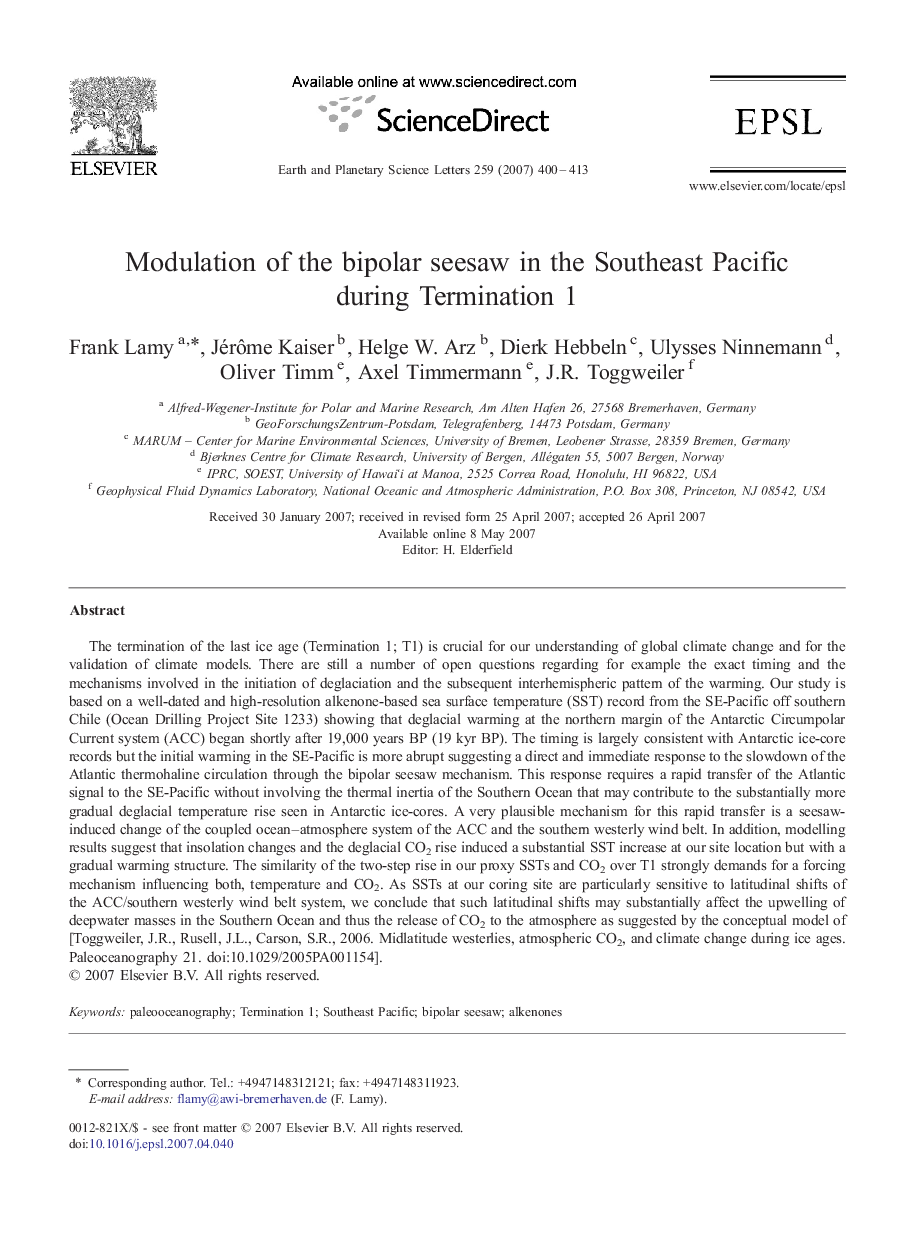| کد مقاله | کد نشریه | سال انتشار | مقاله انگلیسی | نسخه تمام متن |
|---|---|---|---|---|
| 4680314 | 1634916 | 2007 | 14 صفحه PDF | دانلود رایگان |

The termination of the last ice age (Termination 1; T1) is crucial for our understanding of global climate change and for the validation of climate models. There are still a number of open questions regarding for example the exact timing and the mechanisms involved in the initiation of deglaciation and the subsequent interhemispheric pattern of the warming. Our study is based on a well-dated and high-resolution alkenone-based sea surface temperature (SST) record from the SE-Pacific off southern Chile (Ocean Drilling Project Site 1233) showing that deglacial warming at the northern margin of the Antarctic Circumpolar Current system (ACC) began shortly after 19,000 years BP (19 kyr BP). The timing is largely consistent with Antarctic ice-core records but the initial warming in the SE-Pacific is more abrupt suggesting a direct and immediate response to the slowdown of the Atlantic thermohaline circulation through the bipolar seesaw mechanism. This response requires a rapid transfer of the Atlantic signal to the SE-Pacific without involving the thermal inertia of the Southern Ocean that may contribute to the substantially more gradual deglacial temperature rise seen in Antarctic ice-cores. A very plausible mechanism for this rapid transfer is a seesaw-induced change of the coupled ocean–atmosphere system of the ACC and the southern westerly wind belt. In addition, modelling results suggest that insolation changes and the deglacial CO2 rise induced a substantial SST increase at our site location but with a gradual warming structure. The similarity of the two-step rise in our proxy SSTs and CO2 over T1 strongly demands for a forcing mechanism influencing both, temperature and CO2. As SSTs at our coring site are particularly sensitive to latitudinal shifts of the ACC/southern westerly wind belt system, we conclude that such latitudinal shifts may substantially affect the upwelling of deepwater masses in the Southern Ocean and thus the release of CO2 to the atmosphere as suggested by the conceptual model of [Toggweiler, J.R., Rusell, J.L., Carson, S.R., 2006. Midlatitude westerlies, atmospheric CO2, and climate change during ice ages. Paleoceanography 21. doi:10.1029/2005PA001154].
Journal: Earth and Planetary Science Letters - Volume 259, Issues 3–4, 30 July 2007, Pages 400–413